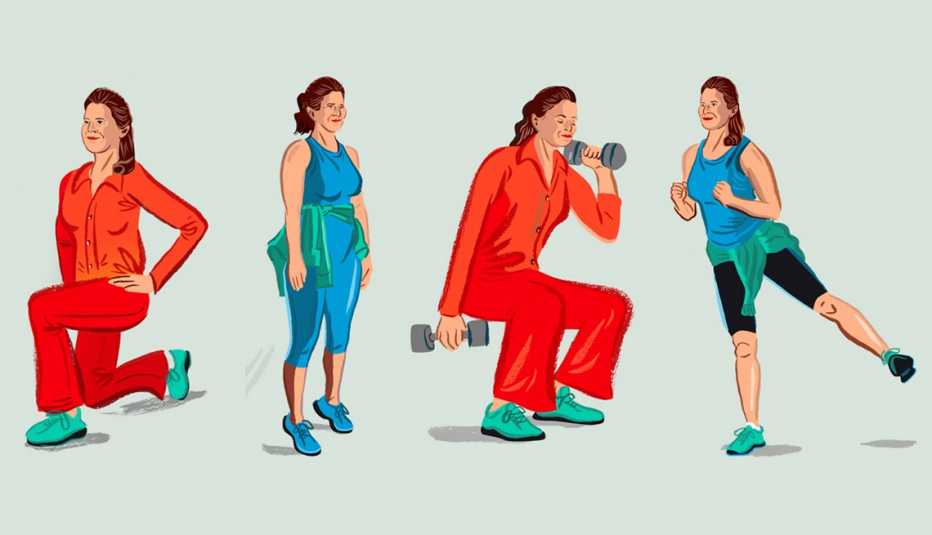AARP Hearing Center


Seated? Please stand (don’t use your hands) to give tribute to the one exercise that fitness gurus say stands out among the rest for healthy aging. Now be seated again. Consider that your first rep.
Yes, a great workout challenges all the major muscle groups in your upper and lower body. But if you have time for only one exercise, you’ll get the most bang for your buck by doing squats, the move in which you slowly lower your bottom to seated level, then stand back up.
“The squat is the most important exercise for seniors,” says Eric Daw, a personal trainer and founder of Omni-Fitt in Toronto, Ontario. “When you have to go to the washroom, that’s a squat. When you get in the car, that’s a squat. Every time you sit down or stand up, that’s a squat. If you don’t do them well, it affects the way you live.”
What muscles do squats work?
Squats strengthen the muscle groups in your legs, including your calves, quadriceps, hamstrings and glutes, as well as muscles in your lower back and core. Those muscles provide the foundation for most activities of daily living.
Squats are the antidote to soft-couch-cushion syndrome — those challenging moments when we struggle to get up from that deep, old sofa. They can also help protect your joints, improve your balance and prevent falls, says Denise Austin, who has spent more than 40 years as one of America’s best-known fitness experts and authors.
“Squats are one of the best overall exercises,” Austin says. “They strengthen the major muscles of the lower body we need to keep strong and also protect two joints we need help with on a regular basis — our knees and our hips.”
Benefits of squats
Some research even shows a link between strong leg muscles and longevity. A study published in the American Heart Association’s journal Circulation found that people ages 70 to 79 with stronger quadriceps (the muscles along the front of the thigh) had a lower chance of dying over six years compared with those who had weaker quadriceps.
How to do squats
Proper form is essential when you’re doing squats, especially for older adults. Start with basic squats, and when you develop your technique, you can add weights.
Here's how you do squats correctly:
1. Get in position
Stand with your feet shoulder width apart. If you have hip issues, it’s OK if your legs are a little farther apart. Point your toes slightly outward.
If you’re new to squats or feel unsteady on your feet, hold on to a stable surface like the kitchen counter. Holding on for stability makes it easier to focus on your form without worrying about your balance, Austin says.





































































More From AARP
9 Ways to Fight Fatigue After 50
Boost energy and stay active as you age.
How to Lose Belly Fat After Age 50
Exercising and eating less sugar are a few ways to reduce belly fat.
Top Exercises for Knee Strength and Flexibility
Try this to strengthen the muscles that support your knees